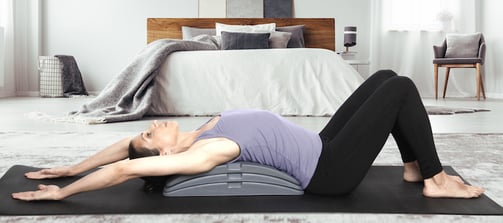Are you doing too many sit-ups? Do you sit most of the day? I discussed core imbalance in “Balance Your Core And Reduce Back Pain.” Core imbalance is the condition of excessive compression, which results in the spine curving forward and often leads to back pain.
Let’s revisit the two patients I discussed in that post. Tracy constantly hunched over her computer and sat on the bus, so her abs were contracted for most of the day. Kyle, the personal trainer, was doing a lot of crunches and sit-ups, and also curling over his bike in spin class. Despite having very different symptoms and lifestyles, they both had core imbalance and were seeking back pain relief.
I’ve learned the following two rules to help my patients combat core imbalance (and subsequent back pain) that stems from misuse of the abdominals:
- For every forward movement, there needs to be a counter-movement. It’s vital that you put extension into your routine to counteract flexion, or crunching or hunching. With regular use of my anti-core imbalance exercises and using a Backbridge, you should feel expansion of the chest and relief in your back.
- Every time you contract a muscle, you need to be sure to relax it. It doesn’t matter if you are a body-builder (who frequently are incapable of turning their heads because the muscles are so tight), trader, nurse, firefighter, or surgeon, you need to find a way to release your muscles.
Exercise Routine For A Balanced Core & Back Pain Relief
Over-exercising, under-exercising, or doing the wrong exercises that put more forward flexion into your abs can cause core imbalance, which will ultimately result in back pain. Integrating the right exercises in moderation will not only help fight core imbalance but also will help you get a firm and fit stomach.
The exercises listed below are for a beginner, but a full set of intermediate and advanced exercises can be found in 3 Weeks to A Better Back and my new book, Sit-Ups Are Stupid & Crunches Are Crap. Begin your exercise routine with the Backbridge extension to warm-up. For beginners, I recommend you start with a set of 12 repetitions on each side for each core balance exercise (standing abdominal stretch, skinnies, standing side twist, back roll out, and tummy tuck). As you become stronger, you can increase to 3 sets of 12. The following exercises will not only provide at-home back pain relief but also improve your posture and strengthen and balance your core muscles:
Backbridge extension – The Backbridge extension helps the spine curve backward, exercise your back, and release contracted muscles. Follow these steps:
- Get your Backbridge and choose the proper level (level 1 is the easiest, and level 5 offers the largest stretch).
- Lie back so that the highest point of the Backbridge is between your shoulder blades, and your head touches the floor.
- Rest your arms on the floor over your head and hold this stretch for 2 minutes (repeat twice a day, in the morning and evening).
- After a few weeks, slowly progress to the next level (2-5).
Standing Abdominal Stretch
- Stand with your feet apart about hip distance and your knees slightly bent.
- Lift your arms in front of you until they are extended straight overhead.
- Bend back slightly, which stretches the abs.
- Repeat 12 times.
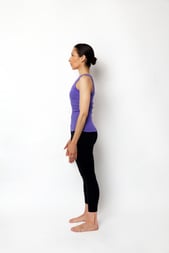
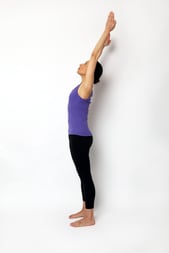
The Skinnies – This exercise works the transverse abdominis.
- Stand, sit, or lie down on your back and exhale completely.
- Pull your navel in and up.
- Hold for 10 seconds and release.
- Repeat 12 times.
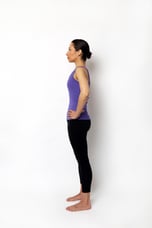
The Standing Side Twist – This exercises works the oblique muscles.
- Stand with your hands on your hips
- With your feet stationary, twist the abdomen to one side and hold for five seconds.
- Next, twist the body to the other side.
- Repeat 12 times.
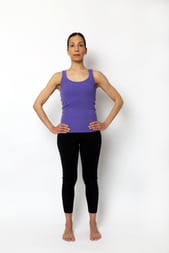

Ball Roll Out –This exercise works the rectus abdominis.
- Kneel in front of an oversize exercise ball.
- Put your forearms on the top of the ball and slowly roll it away from you, which stretches and expands your abdominal muscles as the ball rolls out.
- Roll the ball back with your arms to the same starting position.
- Repeat 12 times.
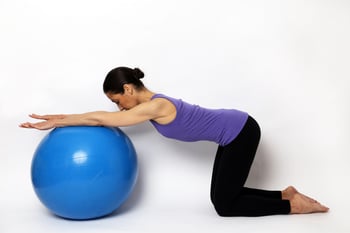
Tummy Tuck – This exercise works both the transverse and the rectus abdominis.
- Lie on your back with your arms at your sides and your palms facing down.
- Draw the naval in and down toward the floor.
- Tilt your pelvis so your buttocks lift slightly off the floor.
- Hold for 10 seconds and release.
- Repeat 12 times.
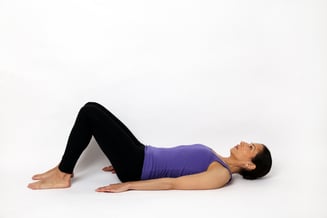
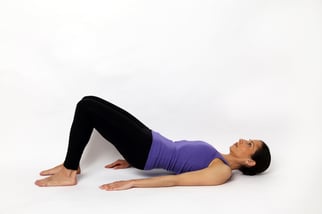
An Ounce Of Prevention Is Worth A Pound Of Cure
Daily stretching and exercise make your body resilient and help prevent small issues from becoming bigger issues. You only have one spine and one core, so take good care of it. No matter what your age, activity level, or flexibility, these gentle stretches and movements can help you increase flexibility, strengthen your back and core, and prevent injury and pain.
Dentists got it right: an ounce of prevention is worth a pound of cure. Dentists don’t wait until a patient needs a root canal until they take action. Similarly, a regular exercise routine and incorporating an at-home back stretch device are the spinal equivalent to brushing and flossing. They should become everyday habits. Think of the Backbridge as the Invisalign® for your spine. By strengthening and balancing your core, and relaxing and stretching muscles that are routinely contracted, you will improve your posture and reduce your back pain.

